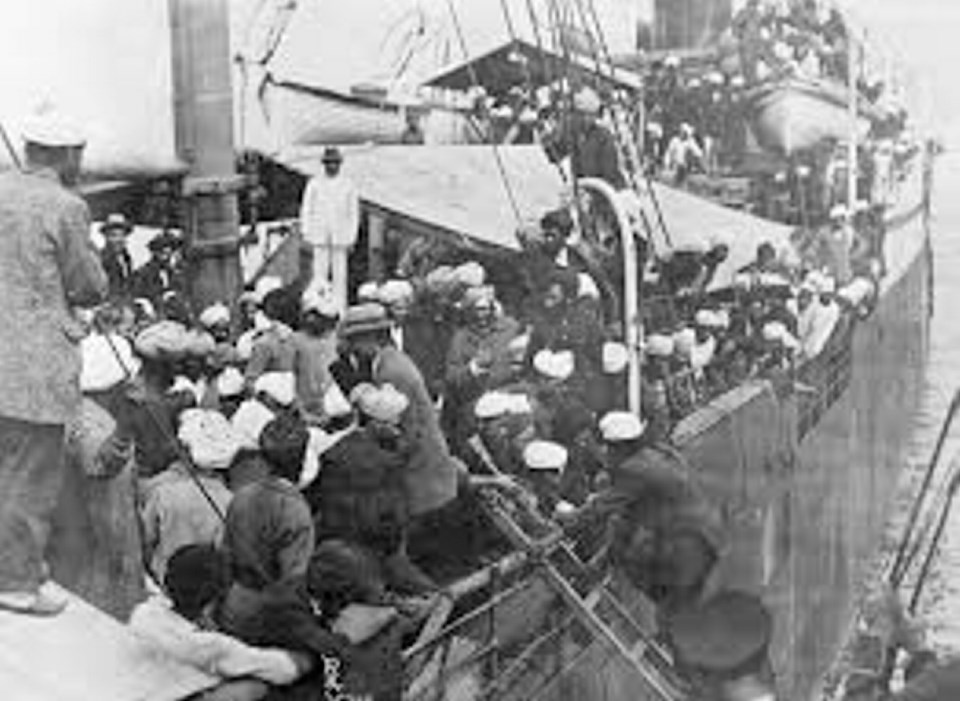Oak Bay resident Jatinder Singh grew up in the United Kingdom, but was always aware of Canada’s refusal to allow passengers on the Komagata Maru to land in 1914.
The incident, which led to passengers being attacked, killed and imprisoned upon return to British-ruled India, is part of his family’s history.
“My maternal grandfather’s uncle was on the ship,” said Singh, a biostatistician who moved to Canada in 2001. He plans to watch Prime Minister Justin Trudeau rise in the House of Commons today to formally apologize on behalf of the Canadian government for the treatment of the Komagata Maru passengers.
“I don’t think time is a factor with something like this. It’s important to learn from history. When we don’t consider what’s happened in the past, we’re liable to repeat it in the future,” Singh said.
Singh’s relative had the last name of Ghag. He was among the 376 passengers, all of Indian origin and most of whom were Sikh, who travelled to Vancouver on the Japanese steamship. He was also among the majority returned to India. Canadian officials argued the ship’s passengers were violating immigration laws even though they were British subjects just like every Canadian of the time.
“When he went back, he was put under house arrest, considered anti-British,” Singh said. Of the hundreds of passengers turned back, 19 were killed in a riot when police in India tried to force them onto trains for Punjab. Others were arrested or went into hiding.
“Interestingly, he forbade anyone in the family from going to England in the 1950s and ’60s. He had very hard feelings towards the Empire.”
Singh said his two sons and daughter have learned about the Komagata Maru in school and through an educational display at Commonwealth Place. “My 10-year-old, who is studying immigration right now, asked why it took 100 years to apologize. He’s just starting to get that visible minorities were once punished and discriminated against.”
Victoria businessman Gordy Dodd, president of the India Canada Cultural Association, said he also plans to watch the apology on television. His organization remembers the Komagata Maru incident at its annual cultural festival and other events around Victoria.
“The government apologized to Chinese Canadians [for the treatment of immigrants with a head tax] and we wanted to see the same. To publicly have that,” Dodd said. “They [the Komagata Maru passengers] suffered a lot. They were our forefathers who just wanted a better life. It means a lot to have an apology.”
The campaign to have a formal apology for the Komagata Maru treatment has a long history in B.C. and Canada. When Vancouver Island’s Moe Sihota became the first Indo-Canadian elected to a Canadian legislature in 1986, representing Esquimalt-Port Renfrew, he began a crusade to correct the Komagata Maru injustice.
It would take until 2008 for the B.C. government to formally apologize, and another eight years for Parliament to follow suit — proof positive, he said, of how diversity can shape politics.
“The face of Canada is somewhat better represented now in our Parliament than years before,” Sihota said. South Asians are the single largest visible minority community in the country and their influence is also reflected in the corridors of power in Ottawa — 23 South Asians, 17 of them Sikh, were elected last fall.
“With that comes a collective understanding, sympathy and appreciation of the significance of these events and the need to apologize for them,” Sihota said.
The Conservative government issued an apology of its own, but former prime minister Stephen Harper delivered it in B.C., not in the House of Commons.



